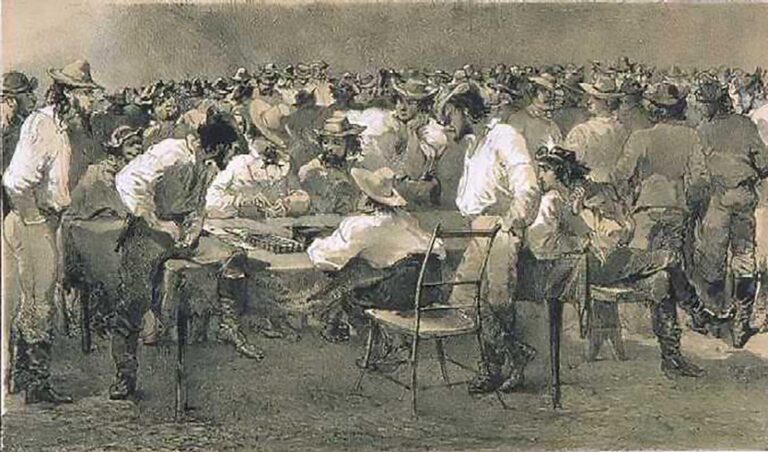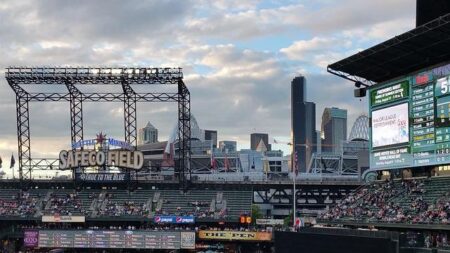How the Gold Rush Sparked a Thriving Culture of Gaming and Entertainment in the American Frontier
Frontier Entertainment: The Social Pulse of Gold Rush Mining Towns
During the mid-1800s Gold Rush, mining camps rapidly evolved into bustling centers not only for prospecting but also for recreation and social interaction. Saloons and gambling establishments emerged as vital communal spaces where miners and settlers sought relief from the relentless toil of extracting precious metals. Popular card games such as poker, faro, and blackjack dominated these venues, accompanied by lively music and dancing that infused the rough frontier towns with energy and camaraderie. The clatter of chips and the cheers of winners echoed alongside the clinking of whiskey glasses, creating an atmosphere of both excitement and escape.
Beyond the pursuit of gold, the gaming tables became arenas of chance and competition, fostering both friendships and rivalries. These social hubs mirrored the ruggedness of frontier life while offering moments of levity. Notably, women—though fewer in number—often played key roles as proprietors and entertainers, adding depth and complexity to the social dynamics of these settlements.
- Popular Games: Poker, Faro, Blackjack, Dice
- Typical Venues: Saloons, Gambling Halls, Dance Floors
- Key Social Roles: Dealers, Entertainers, Saloonkeepers
| Type of Entertainment | Common Venue | Appeal on the Frontier |
|---|---|---|
| Card Games | Gambling Halls | Thrill of chance and social bonding |
| Music and Dance | Saloons and Celebrations | Fostering community spirit and relaxation |
| Theatrical Performances | Theater Tents | Entertainment for diverse audiences |
Entertainment Venues: Pillars of Community in Remote Mining Camps
In the isolated and often harsh environments of Gold Rush mining camps, entertainment spots were indispensable for maintaining social cohesion. Saloons, makeshift theaters, and gambling dens served as critical gathering places where miners could momentarily forget the hardships of frontier life. These venues provided a blend of relaxation, competition, and social interaction that helped forge a sense of belonging among transient populations.
Beyond mere amusement, these establishments influenced social hierarchies and community networks. They were hubs for exchanging news, negotiating deals, and sharing stories, effectively democratizing entertainment and information in the wilderness. Through activities like card games, live music, and theatrical shows, mining camps cultivated resilience and camaraderie essential for survival during America’s westward expansion.
- Frequent Venues: Saloons, Dance Halls, Gambling Dens, Temporary Theaters
- Typical Activities: Card Playing, Storytelling, Live Music, Stage Performances
- Community Functions: News Sharing, Informal Markets, Social Networking
| Venue | Main Purpose | Common Entertainment |
|---|---|---|
| Saloon | Social Gathering Spot | Alcohol, Card Games, Music |
| Dance Hall | Community Festivities | Live Bands, Dancing |
| Gambling Den | Leisure and Competition | Poker, Faro, Dice Games |
| Theater Tent | Performing Arts Venue | Plays, Storytelling |
Distinctive Gambling Games and House Rules in Gold Rush Saloon Culture
Gambling in Gold Rush saloons was a central social activity that attracted miners and townsfolk eager to test their luck. Games like faro, poker, and blackjack were staples, each adapted with unique house rules that varied by establishment. These rules sometimes favored the house, adding an element of risk and excitement that heightened the stakes. The lively sounds of shuffling cards, clinking chips, and animated wagers created an electrifying ambiance that defined frontier nightlife.
Popular Games and Their Saloon Variations:
- Faro: The fastest-paced and most popular game, often manipulated by dealers using rigged dealing boxes to sway outcomes.
- Poker: Variants such as five-card draw and stud were common, with high stakes that could dramatically alter a player’s fortune.
- Blackjack: Frequently played with relaxed rules, including multiple splits and extra hits, to attract more participants.
| Game | House Rule | Typical Betting Range |
|---|---|---|
| Faro | Dealer controls dealing box | $5–$20 |
| Poker | Re-buys permitted | $10–$50 |
| Blackjack | Multiple splits allowed | $5–$25 |
Safeguarding Gold Rush Gaming Artifacts to Enrich Historical Exhibits
Preserving artifacts from Gold Rush gaming halls offers invaluable insights into the leisure activities and social interactions of early American settlers. Items such as poker chips, vintage slot machines, playing cards, and saloon ledgers serve as tangible connections to the vibrant gaming culture that thrived in frontier towns. Museums and historical exhibits increasingly emphasize these relics to provide immersive narratives about the risks, opportunities, and community life of the era.
The conservation of these objects involves collaboration among historians, conservators, and digital technology specialists. Modern techniques like augmented reality reconstructions allow visitors to experience saloon environments beyond traditional displays. Key preservation methods include:
- Climate Control: Maintaining optimal temperature and humidity to prevent deterioration
- Digital Documentation: Creating high-resolution images and 3D models for virtual access
- Community Engagement: Organizing interactive workshops to educate the public on restoration processes
| Artifact | Material | Condition | Exhibit Location |
|---|---|---|---|
| Clay Poker Chips with Gold Inlay | Composite Clay | Well Preserved | American Mining History Gallery |
| Restored Antique Slot Machine | Copper and Brass | Fully Restored | Entertainment History Hall |
| Original Saloon Ledger | Parchment Paper | Delicate | Archive Room |
Looking Ahead: The Enduring Legacy of Gold Rush Entertainment
The Gold Rush era not only reshaped the American West economically but also culturally, through the vibrant gaming and entertainment scenes that flourished in frontier towns. From improvised saloons to bustling gambling halls, these venues were essential social spaces that provided miners and settlers with connection, excitement, and respite amid the uncertainties of mining life. Contemporary explorations, such as PBS’s “American Experience,” bring this rich history to the forefront, highlighting how the human need for leisure and community thrived even in the most challenging environments.




